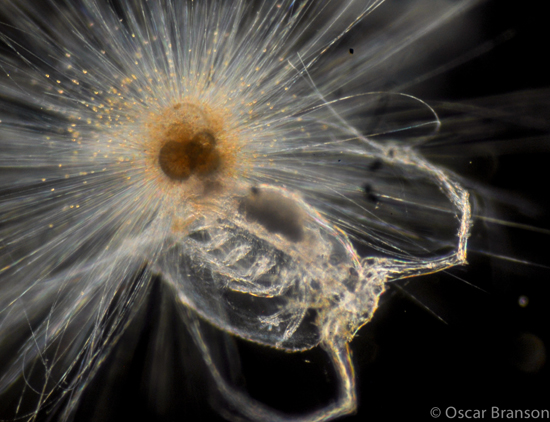
Ancient plankton shells can record the physical and chemical state of the ocean in which they grew. Foraminifera, a type of zooplankton, do this by trapping trace chemical impurities in their calcium carbonate shells. Decoding these impurity records can reveal changes in global climate, atmospheric CO2, and the acidity of the oceans in deep geologic time.
One such impurity is boron, which varies in isotopic composition and concentration as the ocean’s acidity and carbon levels change. Measurements of boron in ancient foraminifera shells, recovered from ocean-floor sediments, indicate how carbon moved between the atmosphere and the ocean over geologic time. Understanding how these processes occurred in the past guides predictions of future ocean and atmospheric conditions, providing context for current global climate change.
While boron has been recognized as a measure of past ocean acidity, or pH, it is unclear how and why boron gets into plankton shells, or how this ancient pH-meter works. Researchers from the University of Cambridge and UC Davis have used the x-ray microscope at ALS Beamline 11.0.2 to study the distribution and chemical bonding of boron in microscopic wafers of foraminifera shells. Their results show that the coordination of boron in foraminiferal shells is more straightforward than previously thought, replacing carbonate directly in the calcite mineral shell. This observation validates the use of boron as a measure of ancient ocean pH and adds confidence to its use in reconstructing ocean and atmospheric chemistry, as well as past climate change. The measurements also revealed complex patterns of boron concentration within the foraminiferal calcite, which could be driven by either biological mechanisms or crystal-growth processes and are the subject of further study.

Work performed on ALS Beamline 11.0.2.
O. Branson, K. Kaczmarek, S.A.T. Redfern, S. Misra, G. Langer, T. Tyliszczak, J. Bijma, and H. Elderfield, “The coordination and distribution of B in foraminiferal calcite,” Earth Planet. Sci. Lett. 416, 67 (2015).